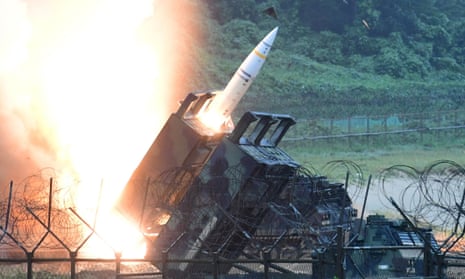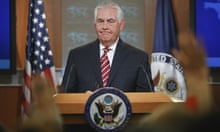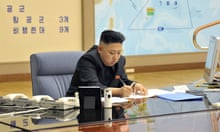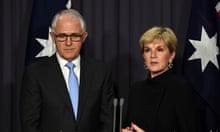US and South Korean militaries will go ahead with massive sea, land and air exercises later this month, despite a spiralling situation in which North Korea has threatened to fire missiles towards a US Pacific territory.
The annual joint exercises, named Ulchi-Freedom Guardian, have long been planned for 21-31 August, but now come at a time when both Washington and Pyongyang are on heightened alert, raising the spectre of a mishap or overreaction.
The timing is doubly concerning as it is within a timeframe in which Pyongyang says it will be ready to fire four Hwasong-12 intermediate-range ballistic missiles toward the US-run island of Guam, an unusually specific threat against the US.
Washington and Seoul say the exercises, involving tens of thousands of American and South Korean troops, are a deterrent against North Korean aggression.
In the past, the practices are believed to have included “decapitation strikes” – trial operations for an attempt to kill Kim Jong-un and his top generals, further antagonising a paranoid leadership.
Trump kept the pressure up with a tweet on Friday morning threatening Pyongyang but indicating he wanted to avoid hostilities:
Military solutions are now fully in place,locked and loaded,should North Korea act unwisely. Hopefully Kim Jong Un will find another path!
— Donald J. Trump (@realDonaldTrump) August 11, 2017
A US-led move that brought the United Nations security council to impose broad sanctions on North Korea was passed on Saturday, sparking a furious response from Kim’s regime, promising “thousands-fold” revenge.
Speaking off the cuff, Trump then added further heat by threatening to unleash “fire and fury”, to which Pyongyang responded with its plan to fire four missiles to land in waters near Guam. On Thursday, Trump suggested his comment “maybe … wasn’t tough enough.”
He added that if North Korea attacked Guam, a 544 sq km (210 sq mile) island in the western Pacific with a third of its land run by the US military, “things will happen to them like they never thought possible, OK?”
A North Korean military statement said it would continue to watch “the speech and behaviour of the US”.
Quick GuideAre US defences strong enough to ward off North Korean missiles?
Show

What kind of anti-missile defences does the US possess?
The US has various anti-missile options, some designed to take down missiles at short-range and others for medium-to-long-range. The US relies heavily on the US Patriot missile and the Terminal High-Altitude Area Defence (THAAD). The US deployed THAAD to South Korea this year to defend against medium-range missiles. There is a three-phased defence system: ground-based missiles on the Korean peninsula; US naval ships stationed in the Pacific; and two bases in Alaska and California that can launch an estimated 36 interceptors.
Is the US system robust enough to stop a North Korean missile attack?
No air defence system offers anything like a complete guarantee of success. The Pentagon offer repeated assurances that air defence systems would be more than a match for any North Korean attack. But when missile defence systems have been put to the test over the last few decades, the performance has been far from reassuring.
The US provided anti-missile defence systems to Israel and Saudi Arabia during the First Gulf War as protection against Iraq's Scud missiles. It was initially claimed that they had shot down 41 of 42 missiles fired by Iraq. But eventually it was acknowledged that only a few missiles had been hit.
Recent tests of interceptors have provided little comfort – with success rates of around 50% on average. The Pentagon celebrated in May when it destroyed a mock warhead over the Pacific but overall the performance has been spotty. Since the newest intercept system was introduced in 2004 only four of nine intercept attempts have been successful. Of the five tests since 2010, only two have been successful.
Officials in Seoul confirmed on Friday that the scheduled military exercises, which are often met with anger from Pyongyang, are expected to go ahead. Following last year’s Ulchi-Freedom Guardian, the North conducted a nuclear test.
After Japan and Germany, South Korea is host to the third-largest number of US troops overseas, with close to 35,000 personnel stationed at 83 sites, a relationship that stretches back to the 1950-1953 Korean war.
In April the US also installed a terminal high-altitude area defence system, or Thaad, in the country, with the purpose of using interceptor missiles to destroy incoming missiles in mid-flight.
And on Thursday, US and Japanese forces began an 18-day live-fire exercise on the northern Japanese island of Hokkaido, another scheduled event that comes at a precarious time.
Meanwhile, a state-run paper in China, North Korea’s uneasy ally, said Beijing should remain neutral if its neighbour launched an attack that threatened the US, a clear warning to Pyongyang against any aggressive action.
But the Global Times also advised: “If the US and South Korea carry out strikes and try to overthrow the North Korean regime and change the political pattern of the Korean peninsula, China will prevent them from doing so.”
Q&AWhat are North Korea's nuclear capabilities?
Show
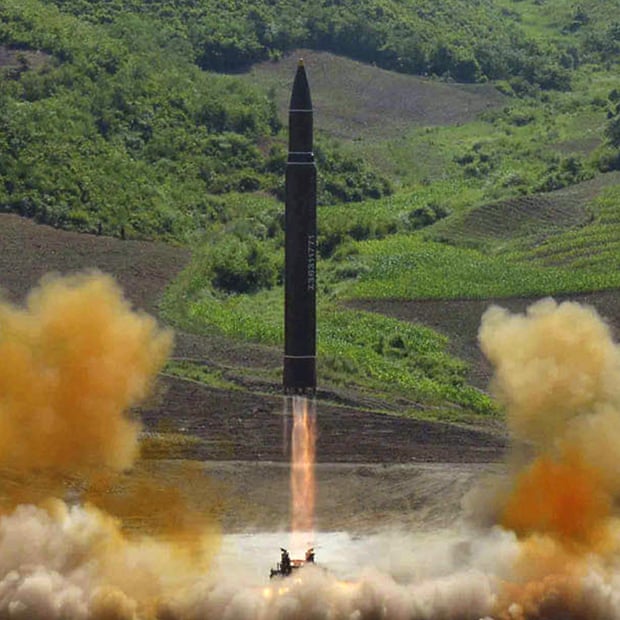
North Korea has carried out five nuclear tests since 2006, so it unquestionably has the capacity to create some form of nuclear bomb.
To function effectively, however, the bomb needs to be small enough to fit on to a missile. Some experts believe the North has already "miniaturised" its nuclear capability, while others believe the regime is still several years away from being able to do so. Japan's defence ministry warned on 8 August that it was possible that Pyongyang had mastered miniaturisation.
North Korea would also need a reliable delivery system for any bomb. Its proven short- and medium-range missiles could reach South Korea and Japan. In July it test-launched two intercontinental ballistic missiles, placing US cities in range of potential attack, according to US experts.
Last year, the North staged two nuclear bomb tests, and in July it launched two intercontinental ballistic missile tests. Observers are divided on whether the reclusive state yet has the capability to mount a miniaturised nuclear warhead on a missile.
“This situation is beginning to develop into this generation’s Cuban missile crisis moment,” ING’s chief Asia economist Robert Carnell said of the Trump-Kim spat in a research note.
“While the US president insists on ramping up the war of words, there is a decreasing chance of any diplomatic solution.”
The Associated Press and Reuters contributed to this report
